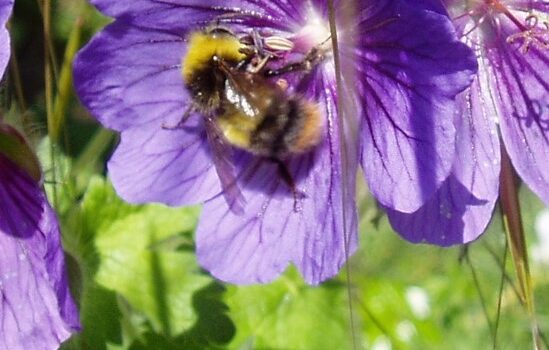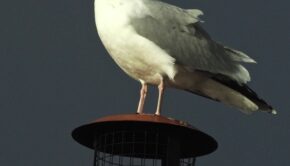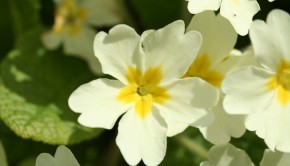Insects in the garden
What would your reaction be if I suggested that we should all attract more insects and other invertebrates to our gardens? I am not expecting everyone to welcome all ‘mini beasts’ with open arms – most people appreciate butterflies, bees and ladybirds but spiders, wasps and greenfly usually divide opinion. However, insects and the like are both vital and under threat. The Wildlife Trusts Action for Insects campaign reports that 41% of insect species across the world are endangered (very high risk of extinction) and the UK is no exception. This matters because 73% of our food is pollinated by insects and they form the basis of the food chain for larger animals in every eco-system.
Gardens are an important element is supporting insects and all our local wildlife. A greater area of the UK is covered by gardens than by nature reserves and, of course, gardens appear where nature reserves are scarce, in towns and cities, providing green corridors and linking larger natural spaces together. We all know that wildlife arrives in our gardens without us having to do much to encourage it and the good news for insects is that the most important action we can take is inaction. Leaving old leaves to lie at the base of a hedge, allowing climbers to clothe a fence in winter and piling some pruning offcuts in a sheltered corner will all support a vast array of invertebrate life, most of which we will never see.
A 30 year study of a domestic garden recorded over 2000 species of insects and other invertebrates, along with birds, mammals and amphibians. It is true that a few will eat plants that we want to nurture and no gardener wants to see precious flowers nipped in the bud or cabbage leaves turned to shreds. But the best way to prevent this in most cases is timely physical or manual intervention and allowing natural predators – the food chain – to be our friends. Ladybirds and their larvae consume quantities of greenfly but using insecticide will kill both.
As gardeners we benefit from the natural world and now is the time to make sure we play our part in protecting it. The Kent Wildlife Trust Gardening for a Wilder Kent programme has information, advice and events to help everyone take Action for Insects.
I started out to write about less well known, but easy to grow, flowering shrubs for late summer colour and my list quickly filled with blue flowers. Coincidentally my favourites are start with C, so here are my three C’s for gardening the blues.
Ceanothus is well known as an evergreen shrub wit bright or dark blue flowers in late spring, but there are autumn flowering forms too. Ceanothus ‘Burkwoodii’ shines from late summer into autumn while Ceanothus ‘Autumnal Blue’ flowers in spring with a second flush in autumn.
Caryopteris is a small, grey leaved shrub with clear blue flowers in late summer. Not suited to colder areas of the UK, it looks quite Mediterranean and is late to produce leaves in spring. I regularly panic that mine has been killed by the winter but it has always come through to delight.
Ceratostigma has the brightest electric blue flowers in autumn just as the evergreen leaves redden for the winter. Choose Ceratostigma willmottianum for a rounded shrub reaching 75cm.
Happy Gardening from Alison
There is no long term commitment – just
all the advice you need an hour at a time.
Find out more at www.gardeningbydesign.co.uk or call 07803 045327






Comments